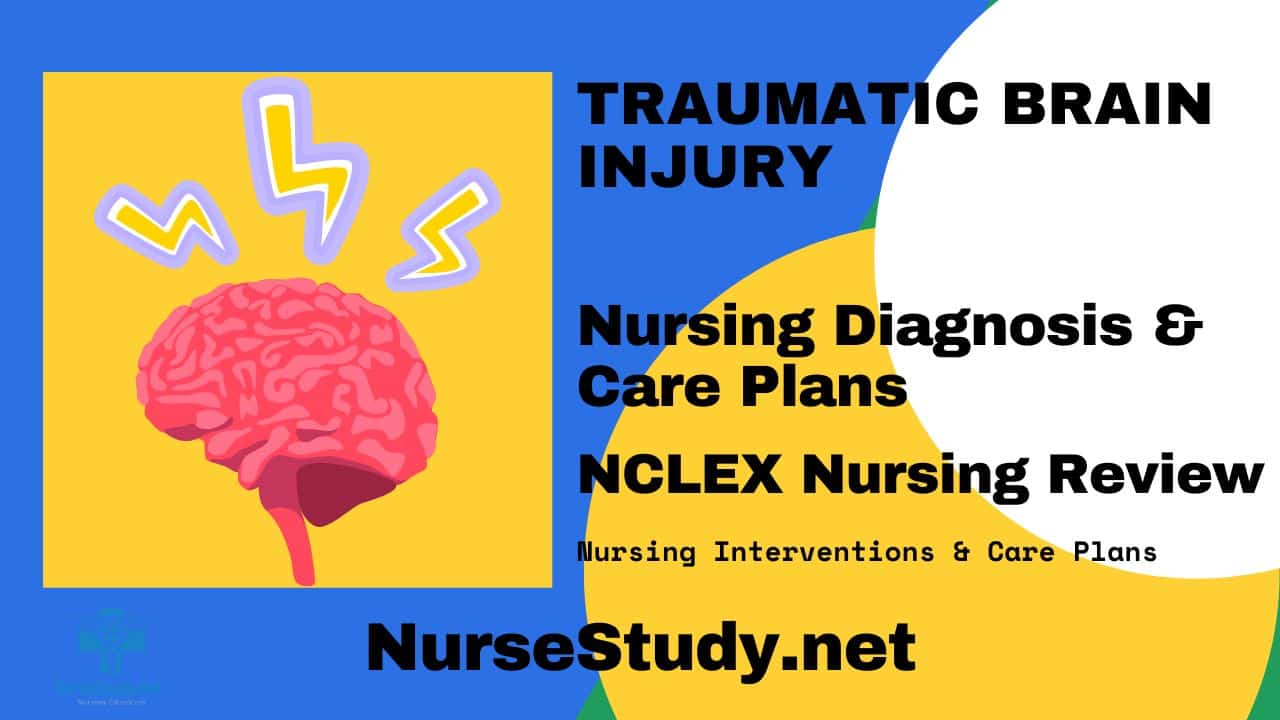Traumatic brain injury (TBI) represents a critical condition requiring specialized nursing care and attention. This comprehensive guide explores the essential nursing diagnoses, interventions, and care plans necessary for optimal patient outcomes.
Understanding Traumatic Brain Injury
TBI occurs when external mechanical forces cause brain dysfunction, resulting in temporary or permanent impairment of cognitive, physical, and psychosocial functions. The severity ranges from mild concussions to severe injuries causing prolonged unconsciousness or death.
Primary vs. Secondary Injury
- Primary injury: Direct trauma impact on brain tissue
- Secondary injury: Delayed complications, including increased intracranial pressure, infection, and hypoxemia
Clinical Manifestations
Patients may present with:
- External trauma signs (lacerations, bleeding, ecchymosis)
- Altered consciousness levels
- Pupillary changes
- Glasgow Coma Scale (GCS) variations
- Vital sign alterations indicating increased ICP
Nursing Assessment
Initial Assessment
- Neurological status evaluation
- Vital signs monitoring
- Level of consciousness assessment
- Pupillary response examination
- Motor function evaluation
Diagnostic Studies
- CT scan for immediate hematoma identification
- MRI for suspected brain stem and vascular injury
- Continuous neurological monitoring
Comprehensive Nursing Care Plans
1. Risk for Increased Intracranial Pressure
Nursing Diagnosis: Risk for Increased Intracranial Pressure related to brain injury and cerebral edema.
Related Factors:
- Brain trauma
- Cerebral edema
- Hematoma formation
- Altered cerebral blood flow
Nursing Interventions and Rationales:
Monitor neurological status hourly
- Enables early detection of deterioration
Maintain head elevation at 30 degrees
- Promotes venous drainage
Monitor vital signs frequently
- Identifies Cushing’s triad early
Assess pupillary responses
- Indicates brain stem compression
Maintain neutral head alignment
- Prevents jugular vein compression
Desired Outcomes:
- Patient maintains stable ICP within normal limits
- Demonstrates no signs of neurological deterioration
- Maintains adequate cerebral perfusion
2. Impaired Physical Mobility
Nursing Diagnosis: Impaired Physical Mobility related to neuromuscular dysfunction.
Related Factors:
- Neurological impairment
- Decreased muscle strength
- Altered consciousness
- Pain
Nursing Interventions and Rationales:
Perform a range of motion exercises
- Prevents contractures
Implement proper positioning
- Prevents pressure injuries
Provide early mobilization as appropriate
- Promotes functional recovery
Monitor for deep vein thrombosis
- Prevents complications
Collaborate with physical therapy
- Ensures comprehensive rehabilitation
Desired Outcomes:
- The patient demonstrates improved mobility
- Maintains joint flexibility
- Shows no signs of complications
3. Disturbed Sensory Perception
Nursing Diagnosis: Disturbed Sensory Perception related to altered cerebral functioning.
Related Factors:
- Neurological trauma
- Altered consciousness
- Biochemical alterations
- Environmental restrictions
Nursing Interventions and Rationales:
Assess sensory responses regularly
- Monitors neurological status
Provide environmental orientation
- Reduces confusion
Implement safety measures
- Prevents injury
Control environmental stimuli
- Reduces sensory overload
Document changes in perception
- Tracks recovery progress
Desired Outcomes:
- The patient demonstrates improved sensory awareness
- Shows appropriate response to stimuli
- Maintains safe environment
4. Risk for Aspiration
Nursing Diagnosis: Risk for Aspiration related to decreased level of consciousness.
Related Factors:
- Impaired swallowing
- Decreased gag reflex
- Altered consciousness
- Tube feedings
Nursing Interventions and Rationales:
Assess swallowing ability
- Determines aspiration risk
Maintain head elevation during feeding
- Reduces aspiration risk
Monitor respiratory status
- Identifies complications early
Implement suction protocols
- Maintains airway clearance
Coordinate with speech therapy
- Improves swallowing function
Desired Outcomes:
- The patient maintains patent airway
- Demonstrates effective swallowing
- Shows no signs of aspiration
5. Ineffective Family Coping
Nursing Diagnosis: Ineffective Family Coping related to uncertain patient prognosis.
Related Factors:
- Crisis situation
- Inadequate support systems
- Limited understanding
- Fear and anxiety
Nursing Interventions and Rationales:
Assess family coping mechanisms
- Identifies support needs
Provide clear information
- Reduces anxiety
Connect with support resources
- Enhances coping
Include family in care planning
- Promotes involvement
Offer emotional support
- Strengthens resilience
Desired Outcomes:
- The family demonstrates effective coping strategies
- Shows understanding of care requirements
- Utilizes available support systems
References
- Ackley, B. J., Ladwig, G. B., Makic, M. B., Martinez-Kratz, M. R., & Zanotti, M. (2023). Nursing diagnoses handbook: An evidence-based guide to planning care. St. Louis, MO: Elsevier.
- Harding, M. M., Kwong, J., & Hagler, D. (2022). Lewis’s Medical-Surgical Nursing: Assessment and Management of Clinical Problems, Single Volume. Elsevier.
- Herdman, T. H., Kamitsuru, S., & Lopes, C. (2024). NANDA International Nursing Diagnoses – Definitions and Classification, 2024-2026.
- Ignatavicius, D. D., Rebar, C., & Heimgartner, N. M. (2023). Medical-Surgical Nursing: Concepts for Clinical Judgment and Collaborative Care. Elsevier.
- Rasmussen MS, Andelic N, Pripp AH, Nordenmark TH, Soberg HL. The effectiveness of a family-centred intervention after traumatic brain injury: A pragmatic randomised controlled trial. Clin Rehabil. 2021 Oct;35(10):1428-1441. doi: 10.1177/02692155211010369. Epub 2021 Apr 15. PMID: 33858221; PMCID: PMC8495317.
- Silvestri, L. A. (2023). Saunders comprehensive review for the NCLEX-RN examination. St. Louis, MO: Elsevier.
- Stephens JA, Williamson KN, Berryhill ME. Cognitive Rehabilitation After Traumatic Brain Injury: A Reference for Occupational Therapists. OTJR (Thorofare N J). 2015 Jan;35(1):5-22. doi: 10.1177/1539449214561765. PMID: 26623474; PMCID: PMC6730543.
- Varghese R, Chakrabarty J, Menon G. Nursing Management of Adults with Severe Traumatic Brain Injury: A Narrative Review. Indian J Crit Care Med. 2017 Oct;21(10):684-697. doi: 10.4103/ijccm.IJCCM_233_17. PMID: 29142381; PMCID: PMC5672675.
